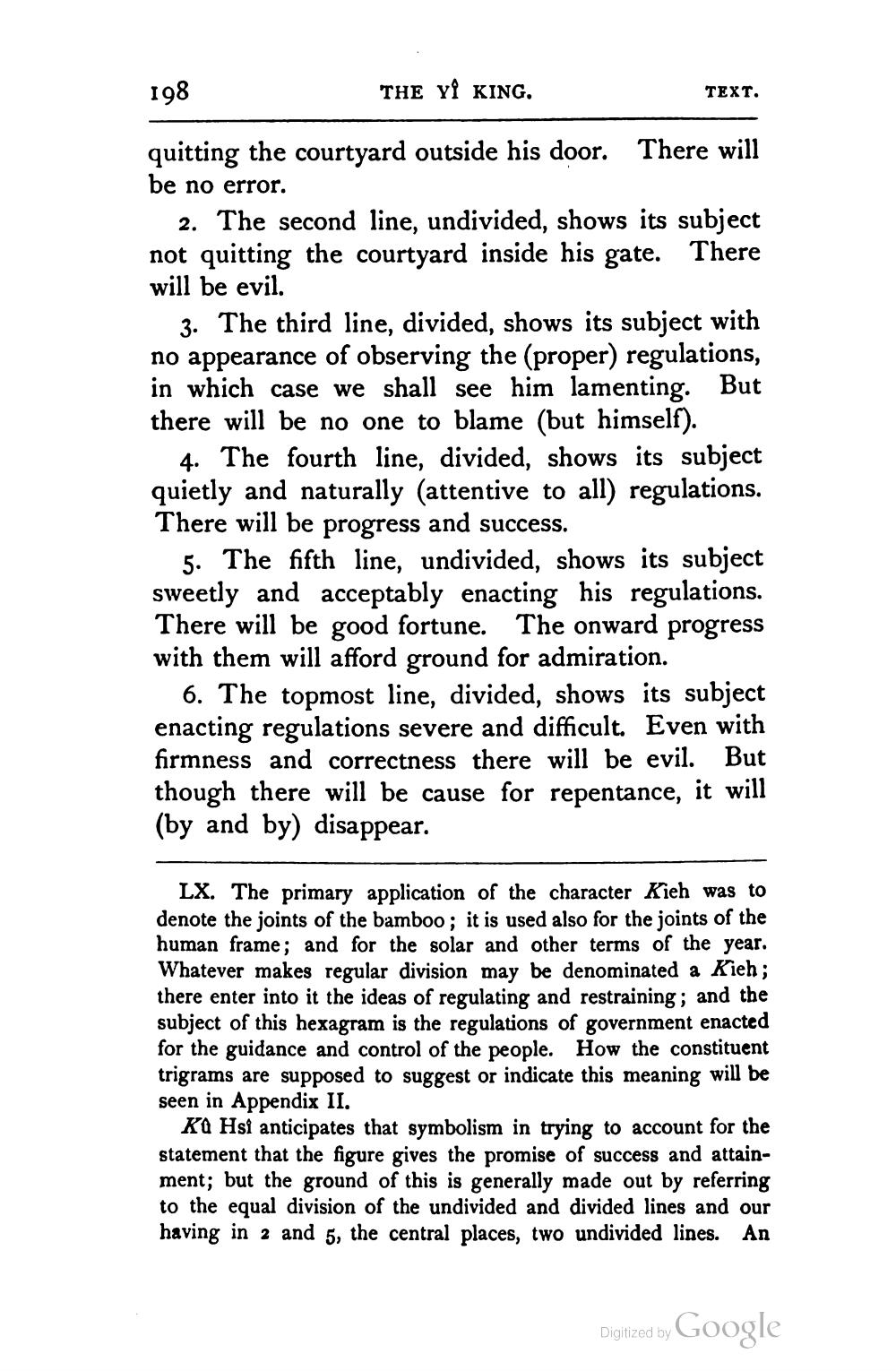________________
198
THE YÎ KING.
TEXT.
quitting the courtyard outside his door. There will be no error.
2. The second line, undivided, shows its subject not quitting the courtyard inside his gate. There will be evil.
3. The third line, divided, shows its subject with no appearance of observing the (proper) regulations, in which case we shall see him lamenting. But there will be no one to blame (but himself).
4. The fourth line, divided, shows its subject quietly and naturally (attentive to all) regulations. There will be progress and success.
5. The fifth line, undivided, shows its subject sweetly and acceptably enacting his regulations. There will be good fortune. The onward progress with them will afford ground for admiration.
6. The topmost line, divided, shows its subject enacting regulations severe and difficult. Even with firmness and correctness there will be evil. But though there will be cause for repentance, it will (by and by) disappear.
LX. The primary application of the character Kieh was to denote the joints of the bamboo; it is used also for the joints of the human frame; and for the solar and other terms of the year. Whatever makes regular division may be denominated a Kieh; there enter into it the ideas of regulating and restraining; and the subject of this hexagram is the regulations of government enacted for the guidance and control of the people. How the constituent trigrams are supposed to suggest or indicate this meaning will be seen in Appendix II.
KQ Hsi anticipates that symbolism in trying to account for the statement that the figure gives the promise of success and attainment; but the ground of this is generally made out by referring to the equal division of the undivided and divided lines and our having in 2 and 5, the central places, two undivided lines. An
Digitized by Google




